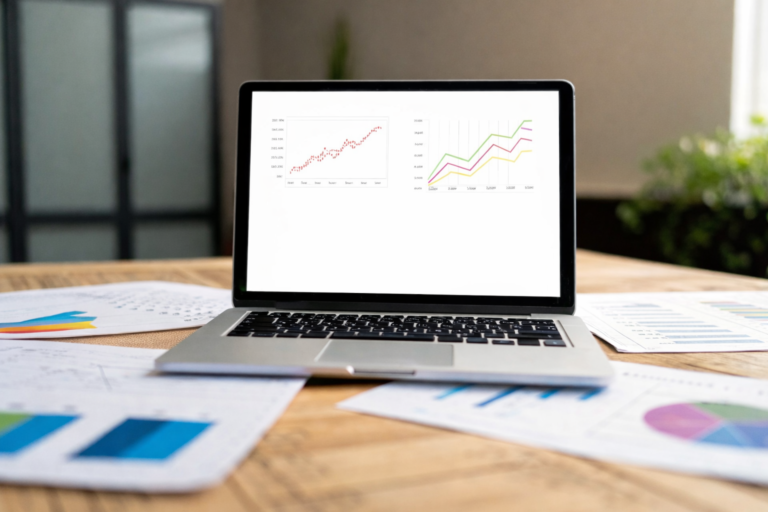Did you know that numerous exemption under section 10 opportunities might be slipping through your tax-saving strategy? Section 10 of the Income-tax Act, 1961 outlines specific types of income that are completely exempt from taxation. From agricultural income to voluntary retirement benefits, this section contains valuable exemptions that could significantly reduce your tax burden.
We often find that taxpayers miss out on key benefits like the Rs. 26,400 annual food allowance exemption or the Internet allowance provided by employers. Additionally, there are exemptions for life insurance maturity benefits of up to ₹2.5 lakhs per year for policies purchased after February 1, 2021. Agricultural income exemptions are specifically provided under Section 10(1), including income from sale of agricultural produce and revenue from agricultural land in India. However, many taxpayers overlook these potential savings when filing their returns.
In this comprehensive guide, we’ll explore the various exemptions available under Section 10 that you might be missing, how to qualify for them, and the documentation needed to claim these benefits effectively.
Understanding Section 10 of Income Tax Act
Section 10 of the Income Tax Act serves as a comprehensive framework for tax relief, aimed at reducing the overall tax burden on Indian taxpayers. Unlike tax deductions that lower your taxable income, exempted income is completely excluded from tax calculations. This distinction makes understanding Section 10 particularly valuable for maximizing your tax savings.
What qualifies as exempted income under Section 10?
The Income Tax Act outlines numerous categories of income that qualify for exemption under Section 10. These exemptions cover a wide spectrum of income sources, each addressed in specific subsections:
Agricultural Income (Section 10(1)): All income derived from agricultural operations receives complete tax exemption. This encompasses:
- Revenue from the sale of agricultural produce
- Income from agricultural land in India
- Earnings from farm buildings used for agricultural purposes
- Income from operations like sowing, cultivation, tilling, weeding, and pruning
Partnership Income (Section 10(2A)): Any share of profits received by partners from a firm or Limited Liability Partnership is fully exempt from taxation
Interest-Based Exemptions (Section 10(15)): Various types of interest income enjoy exemption:
- Interest from post office savings accounts
- Interest on redemption of securities and bonds
- Premium on notified savings certificates
- The exemption limit is Rs. 3,500 for individuals and Rs. 7,000 for joint account holders
Employment-Related Exemptions:
- Leave Travel Allowance (Section 10(5)): Covers domestic travel expenses like airfare, train, or bus fare
- Gratuity (Section 10(10)): Fully exempt for government employees, with conditions for private sector employees
- Leave Encashment (Section 10(10AA)): Exemption for unused leave encashed at retirement
- Retrenchment Compensation (Section 10(10B)): Exempt up to Rs. 5,00,000 or 15 days’ average pay multiplied by completed service years, whichever is lower
- Voluntary Retirement (Section 10(10C)): Exempt up to Rs. 5,00,000 or other calculated amounts based on service
- House Rent Allowance (Section 10(13A)): Exemption for accommodation expenses
Capital Gains Exemptions:
- Capital gains from urban agricultural land acquisition (Section 10(37)): Exempt if the land was used for agricultural purposes for at least two years before sale
- Long-term capital gains from equity shares under specific conditions
Regional and Community-Specific Exemptions:
- Income of Scheduled Tribe members in Arunachal Pradesh, Manipur, Mizoram, Nagaland, and Tripura (Section 10(26))
- Income of Sikkimese individuals (Section 10(26AAA))
Business-Related Exemptions:
- Special Economic Zone unit export income (Section 10AA): 100% deduction for first five years, 50% for next five years for businesses established between April 1, 2006, and April 1, 2021
Who can claim exemptions under Section 10?
Eligibility for Section 10 exemptions varies based on several factors:
By Age and Income Level:
- Individuals below 60 years: Basic exemption limit of Rs. 2.50 lakh per fiscal year
- Senior citizens (60-80 years): Exemption up to Rs. 3 lakh per fiscal year
- Super senior citizens (above 80 years): Exemption up to Rs. 5 lakh per fiscal year
By Employment Status:
- Salaried employees qualify for numerous allowance-based exemptions like HRA, LTA, and children’s education allowance
- Government employees receive specific exemptions, particularly those posted abroad who are Indian citizens
- Partners in firms or LLPs can claim exemptions on their profit share
By Professional Category:
- UNO employees
- High Court and Supreme Court judges entitled to Sumptuary Allowance
- Teachers and professionals working in remote locations
- Educational or medical institutions with annual receipts under Rs. 5 crore
By Regional Identity:
- Members of Scheduled Tribes residing in specific northeastern states
- Sikkimese individuals earning from sources within Sikkim
Furthermore, to claim these exemptions, you must file your income tax return regardless of whether your income falls below the taxable threshold. This notification to the government is essential for maintaining compliance while benefiting from the exemptions.
Note that exemptions differ fundamentally from deductions—while deductions reduce your taxable income by specific amounts, exemptions completely exclude certain income sources from taxation calculations.
Employment-Linked Exemptions You Might Be Missing
Most employees fail to take full advantage of tax exemptions hidden in their salary structure. Your CTC likely contains several components that qualify for tax breaks under various subsections of Section 10, potentially saving you thousands in tax liability annually.
Section 10(5): Leave Travel Allowance (LTA) conditions
Leave Travel Allowance offers tax savings on domestic travel expenses, yet many employees misunderstand its scope. The exemption applies exclusively to actual travel costs—specifically airfare, train fare, or bus fare incurred during leave periods. Other expenses such as hotels, food, sightseeing, and local transportation remain fully taxable.
Moreover, the exemption is limited to the lower of either the LTA amount in your CTC or the actual travel expenses incurred. For instance, if your employer provides ₹30,000 as LTA but you spend only ₹20,000 on eligible travel, the exemption applies to just ₹20,000, with the remaining ₹10,000 becoming taxable income.
Remember that LTA benefits are available for only two journeys in a block of four calendar years. The current block extends from 2022 to 2025. Consequently, timing your travel claims strategically across these periods maximizes your tax benefits.
Section 10(10AA): Leave Encashment for non-govt employees
The Budget 2023 significantly enhanced this benefit by raising the exemption limit for leave encashment received at retirement from ₹3,00,000 to a substantial ₹25,00,000 for non-government employees. This exemption applies only at retirement or resignation—leave encashed during active service remains fully taxable.
For non-government employees, the tax-free amount is calculated as the lowest of:
- ₹25,00,000
- Leave salary actually received
- Average salary of last 10 months
- Cash equivalent of unavailed leave (calculated at 30 days per year of service)
In contrast, government employees enjoy complete exemption on their leave encashment amount. Even though the non-government exemption seems generous, careful calculation is essential to determine your actual tax benefit.
Section 10(13A): HRA exemption calculation rules
House Rent Allowance offers substantial tax relief if you live in rented accommodation. The exemption is calculated as the least of:
- Actual HRA received
- For metro cities (Delhi, Mumbai, Chennai, Kolkata): 50% of basic salary + DA
- For non-metro cities: 40% of basic salary + DA
- Actual rent paid minus 10% of basic salary + DA
For example, an employee in Mumbai with a basic salary of ₹40,000 monthly, receiving HRA of ₹20,000 monthly, and paying rent of ₹15,000 monthly would get an exemption of ₹1,32,000 annually. The remaining ₹1,08,000 of HRA would be taxable.
Important to note, if your annual rent exceeds ₹1,00,000, you must provide your landlord’s PAN details when claiming the exemption. This requirement catches many taxpayers off-guard, resulting in denied exemptions.
Section 10(14): Internet and food allowance exemptions
This lesser-known section covers special allowances for expenses incurred in performance of duties. Internet allowance provided by your employer is fully exempt from tax under this provision.
Additionally, food allowance up to ₹26,400 annually (assuming two meals per day for 22 working days per month) is tax-exempt. This translates to approximately ₹2,200 monthly—a modest but valuable exemption often overlooked during tax planning.
These allowances must be actually spent for their designated purposes to qualify for exemption. Hence, maintaining basic documentation of these expenses is advisable, though detailed proof is typically not required unless the expenses are disproportionate to your salary.
By understanding and correctly claiming these employment-linked exemptions, you can significantly reduce your taxable income while staying fully compliant with tax regulations.
Investment-Based Exemptions Often Overlooked
Smart investors look beyond standard tax deductions to secure additional benefits through investment-based exemptions under Section 10. These provisions can shield significant portions of your investment income from taxation, primarily when specific conditions are met.
Section 10(10D): Life insurance maturity proceeds
Life insurance policies offer valuable tax advantages beyond their primary protection function. Under Section 10(10D), any sum received from a life insurance policy, including bonuses and maturity proceeds, is completely tax-exempt. Nevertheless, this exemption comes with specific conditions:
For policies issued before April 1, 2012, the annual premium must not exceed 20% of the sum assured. This threshold tightens to 10% for policies issued after April 1, 2012.
The Finance Act 2023 introduced significant changes for non-linked policies (traditional plans) issued on or after April 1, 2023. The tax exemption now applies only when the aggregate premium across all your life insurance policies doesn’t exceed ₹5 lakh annually throughout the policy term. This is similar to the ₹2.5 lakh annual premium cap already in place for Unit Linked Insurance Plans (ULIPs) issued after February 1, 2021.
Indeed, there are exceptions to these premium thresholds. For individuals with disabilities or specific diseases (as defined under Section 80U or 80DDB), the premium limit rises to 15% of the sum assured for policies issued after April 1, 2013.
Notably, all death benefits remain entirely tax-free regardless of premium amount, except in cases of Keyman insurance policies.
Section 10(11): Provident Fund and Sukanya Samriddhi Account
The interest earned on your Provident Fund is fully tax-exempt under Section 10(11) upon retirement or resignation. Subsequently, a crucial limitation was introduced effective April 1, 2021—interest on annual contributions exceeding ₹2.5 lakh is now taxable.
The Sukanya Samriddhi Yojana (SSY), designed for the girl child’s future, offers exceptional tax benefits. Both the principal deposited and the interest earned enjoy exemptions under Section 10(11A). Currently, SSY offers an attractive interest rate of 8.2% per annum (for Q1 of FY 2025-26), compounded annually.
Parents can open this account for a girl child within 10 years of her birth. Although the maturity period spans 21 years from account opening, contributions are required only for the first 15 years. Funds can be withdrawn earlier for higher education or marriage purposes once the girl reaches 18 years.
Section 10(15): Interest on savings certificates and bonds
Interest income from specific investments receives tax exemption under Section 10(15), aimed at encouraging savings and investments. The exemption limits are:
- ₹3,500 for individuals
- ₹7,000 for joint account holders
This provision covers various investment instruments:
- Notified bonds and securities
- Savings certificates
- Deposits with the National Savings Fund
- Relief Bonds
- Gold Deposit Bonds under the Gold Deposit Scheme, 1999
- Deposits under Gold Monetisation Scheme, 2015
For non-residents, additional exemptions apply on interest from deposits in foreign currency with scheduled banks (when approved by RBI).
Several government-backed investment schemes qualify for this exemption, including National Savings Certificate (NSC), Kisan Vikas Patra (KVP), Post Office Savings Account, Public Provident Fund (PPF), and Senior Citizen Savings Scheme.
The exemption extends to different categories of taxpayers depending on the specific investment type. For instance, interest on Relief Bonds is exempt for individuals and HUFs, whereas interest on certain notified bonds is exempt for all assessees.
Despite these generous provisions, many taxpayers overlook these exemptions when structuring their investment portfolios, thereby missing significant tax-saving opportunities.
Exemptions for Specific Regions and Communities
The Income Tax Act provides unique geographical and community-based exemptions that remain largely unknown to most taxpayers. These specialized provisions offer complete tax relief to specific communities and regions, recognizing their historical, cultural, and economic circumstances.
Section 10(26): Scheduled Tribe income in NE states
Members of Scheduled Tribes residing in designated northeastern regions enjoy substantial tax benefits under Section 10(26). This exemption applies primarily to individuals from tribes in Arunachal Pradesh, Manipur, Mizoram, Nagaland, and Tripura. Additionally, the provision extends to Scheduled Tribes in the North Cachar Hills District, Karbi Anglong District, and certain parts of Assam.
The exemption covers two key income categories:
- Income from any source within the specified areas
- Income through dividends or interest on securities
It’s worth noting that not all income qualifies for exemption. The following sources remain taxable:
- Rental income from immovable property outside the specified areas
- Business income generated outside these regions
- Investment returns or capital gains from outside the area
To claim this exemption, tribal members must provide documentary evidence of their tribal status, typically through certificates issued by competent authorities. Furthermore, they must establish that the income was generated within the designated areas.
Section 10(26AAA): Sikkimese individual income
Sikkimese individuals receive special tax treatment under Section 10(26AAA), introduced with retrospective effect from the 1989-90 tax year. This provision exempts income from:
- Any source within Sikkim
- Dividends or interest on securities
Historically, this exemption covered 94.6% of Sikkim’s population but excluded approximately 1% comprising Indian citizens who settled in Sikkim before April 26, 1975, yet weren’t registered in the Sikkim Subjects Register. This occurred because registration required giving up Indian citizenship, which these individuals chose to retain.
Accordingly, a landmark Supreme Court judgment expanded the scope of this exemption. The court struck down provisions denying exemptions to Sikkimese women marrying non-Sikkimese men after April 1, 2008, ruling it discriminatory and unconstitutional. Furthermore, the Court directed that Indian citizens settled in Sikkim prior to April 26, 1975, should also receive exemption benefits.
This exemption stems from Sikkim’s 1975 merger treaty with India, protected under Article 371(F) of the Indian Constitution. It represents one of the few region-specific total income tax exemptions in India.
Section 10(37): Capital gains on urban agricultural land
Section 10(37) offers valuable relief on capital gains arising from the compulsory acquisition of urban agricultural land, provided certain strict conditions are met. This exemption applies exclusively to:
- Individual taxpayers or Hindu Undivided Families
- Capital gains from agricultural land within municipal limits or within specified distances from municipalities based on population
Key eligibility requirements include:
- The land must have been used for agricultural purposes for at least two years immediately before the transfer date
- The transfer must result from compulsory acquisition under law
- The compensation determination must be approved by the Central Government or Reserve Bank of India
- The compensation must have been received on or after April 1, 2004
The population-based distance criteria for eligibility follows a specific pattern:
- Up to 2 kilometers from municipal limits for areas with 10,000-100,000 population
- Up to 6 kilometers for areas with 100,000-1,000,000 population
- Up to 8 kilometers for areas with over 1,000,000 population
Given these requirements, this exemption often goes unclaimed due to lack of awareness about the specific criteria. Nevertheless, when applicable, the entire capital gain becomes tax-exempt with no maximum limit prescribed.
Business and Partnership Related Exemptions
Business owners and partners often miss substantial tax savings available through specialized exemptions under Section 10. Given that partnership firms and special economic zone businesses face unique tax challenges, the Income Tax Act provides targeted relief that can significantly reduce tax burdens when properly utilized.
Section 10(2A): Partner’s share in firm profits
The Income Tax Act offers complete tax exemption on profits distributed to partners of firms and Limited Liability Partnerships (LLPs) under Section 10(2A). This provision serves a crucial purpose—preventing double taxation of the same income.
When a partnership firm earns profits, it pays tax on its total income at the applicable rate. Afterward, the firm distributes these already-taxed profits among partners according to their profit-sharing ratio. Currently, these distributed profits remain entirely tax-exempt in the partners’ hands.
Considering how profit distribution works:
- Partners mutually determine their profit-sharing ratio in the Partnership Deed
- If the deed doesn’t specify, profits can be distributed equally
- The same ratio applies to both profit sharing and loss division
- Firms may retain a portion of profits as reserves rather than distributing everything
Importantly, this exemption applies exclusively to the partner’s share in profits. Beyond that, other payments received from the firm remain fully taxable in partners’ hands, including:
- Interest on capital contributed to the firm
- Monthly remuneration or salary drawn from the firm
- Rent received from property leased to the firm
For instance, if a partnership firm ABC with three equal partners earns ₹3 lakhs annually and pays each partner ₹10,000 monthly as remuneration, each partner would receive ₹1 lakh as their profit share. Effectively, this profit portion would be tax-exempt for the partners, yet the ₹1,20,000 annual remuneration would remain taxable.
Section 10AA: SEZ unit export income deduction
Businesses operating in Special Economic Zones (SEZs) can claim substantial deductions on export profits under Section 10AA, provided they meet specific criteria. This provision aims to boost exports and attract foreign investment.
To qualify for this deduction, businesses must:
- Be established within SEZs between April 1, 2005, and April 1, 2020
- Begin operations between April 1, 2006, and April 1, 2021
- Not be formed by splitting or reconstructing existing businesses
- Not use transferred plants or machinery from other units
- File tax returns before the due date under Section 139(1)
- Remit export proceeds to India within six months from the previous year-end
The time-bound deduction schedule works as follows:
- Years 1-5: 100% of export profits are tax-exempt
- Years 6-10: 50% of export profits are tax-exempt
- Years 11-15: 50% of export profits or the amount credited to SEZ Reinvestment Reserve Account (whichever is lower) is exempt
For calculating the deduction, businesses use this formula: Export Profit = (Profit of the unit × Export Turnover) ÷ Total Business Turnover
For years 11-15, businesses must create a Special Economic Zone Reinvestment Reserve Account. Primarily, the funds from this account can only be used to purchase new plant and machinery within three years of account creation. Furthermore, businesses must submit Form No. 56FF detailing these purchases when calculating taxable income.
If reserve funds remain unused after three years or are misused, the claimed deduction amount gets added back to profits and taxed accordingly.
In cases where an SEZ unit undergoes amalgamation or demerger before completing its deduction period, the amalgamating unit cannot claim deductions for that particular year. Above all, the amalgamated company can continue claiming benefits as if no merger occurred.
Exemptions for Government and Foreign Employees
Government and foreign service professionals receive special tax advantages under Section 10 that often go unnoticed. These provisions recognize the unique circumstances faced by Indian citizens serving abroad and can result in substantial tax savings when properly claimed.
Section 10(7): Allowances for government employees abroad
Indian government employees posted overseas qualify for complete tax exemption on allowances and perquisites paid by the government for services rendered outside India. This exemption applies exclusively to Indian citizens who receive these benefits while working abroad for the government.
To qualify for this exemption, four mandatory conditions must be met:
- The income must be in the form of perquisites or allowances under the ‘Salaries’ head
- The payer must be the Government of India
- The recipient must be an Indian citizen
- The services must be rendered outside India
For instance, if Mr. Subir, an Indian citizen employed by the Indian government, is assigned to a diplomatic mission in the United States, all allowances and perquisites he receives from the Indian government for his service abroad would be completely tax-exempt. This provision primarily benefits diplomats, embassy staff, and other government officials representing India internationally.
Section 10(6): Remuneration for Indian citizens working overseas
Section 10(6) offers tax relief for individuals working outside India, primarily benefiting those representing India in foreign countries. This exemption extends to officials at embassies, high commissions, consulates, or trade representatives of foreign states.
Similarly, employees of foreign companies can claim this exemption, provided they satisfy these key conditions:
- The foreign company must not engage in any business or trade within India
- The employee’s stay in India must not exceed 90 days during the assessment year
- The remuneration received should not be eligible for deduction from the employer’s income
The Finance Act includes additional provisions under Section 10(6) for specific categories:
- Section 10(6)(ii): Tax exemption for remuneration received by specified diplomats and their staff who are non-citizens of India
- Section 10(6)(vi): Relief for non-citizen employees of foreign enterprises not engaged in Indian business
- Section 10(6)(viii): Exemption for non-citizen, non-resident employees serving on foreign ships with stays not exceeding 90 days
- Section 10(6)(xi): Benefits for foreign citizens undergoing training in government offices or statutory undertakings
For example, if Ms. Shagufta, an Indian citizen working for a UAE-based company, visits India for 85 days during a financial year, her UAE salary would be exempt from Indian income tax since she meets the condition of not exceeding 90 days in India.
Whenever claiming these exemptions, proper documentation showing employment status, citizenship, and duration of stay becomes essential for substantiating your claim during assessment.
Lesser-Known Special Allowances Under Section 10(14)(ii)
Section 10(14)(ii) contains several valuable tax exemptions for specific allowances that remain hidden in plain sight. These special allowances are granted to meet expenses incurred while performing duties under certain conditions or to compensate for increased living costs.
Children education allowance: ₹100/month per child
The Income Tax Act provides a modest yet beneficial exemption for education expenses through the Children Education Allowance. Under this provision, taxpayers can claim tax exemption of ₹100 per month per child for a maximum of two children. This translates to an annual exemption limit of ₹2,400 for families with two children.
Furthermore, if your child attends a boarding school, you qualify for an additional Hostel Expenditure Allowance of ₹300 per month per child, again limited to two children. This raises the annual exemption limit to ₹9,600 per year when combining both education and hostel allowances.
The exemption covers various education-related expenses including:
- Tuition fees (admission, practical, extracurricular activities)
- Miscellaneous fees included in school bills
- Books and notebooks
- School uniform costs
Primarily, transportation and stationery expenses fall outside the scope of eligible reimbursements.
Transport allowance for disabled employees: ₹3,200/month
Beginning with the financial year 2018-19, the standard transport allowance for regular employees was discontinued. Yet, employees with disabilities continue to receive substantial benefits. Specifically, blind, deaf, mute, or orthopedically handicapped employees can claim an exemption of ₹3,200 per month (₹38,400 annually) for commuting between their residence and workplace.
This provision applies to individuals with disabilities affecting their lower extremities. The exemption amount equals either the actual allowance received or the specified limit, whichever is lower.
Underground mine and island duty allowances
Besides the better-known allowances, Section 10(14)(ii) provides exemptions for employees working under challenging conditions:
- Underground Mines Allowance: Employees working in underground mines qualify for an exemption of ₹800 per month.
- Island Duty Allowance: Armed forces personnel stationed in Andaman & Nicobar Islands and Lakshadweep can claim an exemption of ₹3,250 per month.
- Special Compensatory Highly Active Field Area Allowance: Personnel in designated areas receive an exemption of ₹4,200 per month.
- High Altitude Allowance: Armed forces personnel working at elevations between 9,000-15,000 feet can claim ₹1,060 per month, increasing to ₹1,600 per month for elevations above 15,000 feet.
These specialized allowances represent substantial tax savings opportunities often overlooked by eligible taxpayers.
How to Claim Exemption Under Section 10 While Filing ITR
Properly claiming exemptions under Section 10 requires careful documentation and correct reporting in your income tax return. Following the right process ensures you maximize tax benefits while staying compliant with tax regulations.
Required documents: Form 16, salary slips, investment proofs
Successfully claiming Section 10 exemptions starts with maintaining proper documentation. Essential documents include:
- Form 16: This annual certificate from your employer details salary breakdown and TDS deductions—crucial for verifying allowances eligible for exemption
- Salary Slips: Monthly payslips indicating specific allowances received throughout the financial year
- Expense Proofs: Bills and receipts for expenditures claimed under special allowances (like journey tickets for LTA)
- Form 12BB: This form must be submitted to your employer for claiming exemptions on HRA, LTA, and other allowances
Initially, check your salary structure to identify all allowances eligible for exemption under Section 10. Henceforth, ensure your Form 16 reflects these exemptions correctly in TDS calculations.
Choosing the correct ITR form for your income type
Selecting the appropriate ITR form is essential for claiming Section 10 exemptions:
- ITR-1 (Sahaj): Suitable for salaried individuals with exempt income up to ₹5,000
- ITR-2: Required if exempt income exceeds ₹5,000 or includes agricultural income above ₹5,000
Your income sources determine which form to use—ITR-1, ITR-2, or others—based on your specific situation.
Reporting exempt income in the correct schedule
Even though exempt income doesn’t attract tax, you must disclose it in your income tax return:
- Salaried Individuals: Report exempt income like HRA, LTA, and Leave Encashment under Schedule S
- Non-Salaried Individuals: Report other exempt income forms under Schedule EI (Exempt Income)
After applying exemptions to your total income, calculate your taxes correctly. Submit your return before the filing deadline and e-verify it promptly to avoid penalties.
Remember, thorough documentation supports your exemption claims during any assessment or verification by tax authorities.
Conclusion
Understanding Section 10 exemptions thoroughly represents a significant opportunity to reduce your tax burden legally. Throughout this guide, we’ve explored numerous tax exemptions that often go unnoticed by taxpayers despite their substantial financial benefits.
Tax exemptions differ fundamentally from deductions. Essentially, exempted income gets completely excluded from tax calculations rather than merely reducing taxable income. This distinction makes Section 10 provisions particularly valuable for comprehensive tax planning.
We’ve covered several major exemption categories in this article. Employment-linked exemptions like HRA, LTA, and food allowances can save thousands annually for salaried individuals. Additionally, investment-based exemptions for life insurance proceeds, provident funds, and specific interest income provide long-term tax advantages. Certain regions and communities benefit from specialized exemptions, while business owners and partners enjoy targeted relief under specific sections.
Documentation plays a crucial role when claiming these exemptions. Accordingly, maintaining proper records like Form 16, salary slips, and relevant proofs ensures smooth processing of your claims. Choosing the correct ITR form based on your income type further simplifies the filing process.
Many taxpayers miss these exemptions simply due to lack of awareness. Therefore, reviewing your income sources against Section 10 provisions at least once annually helps maximize your tax savings legitimately. The tax benefits described here remain fully compliant with regulations while reducing your overall tax liability.
Remember that tax laws undergo changes periodically. Consequently, staying updated about amendments to Section 10 provisions ensures you continue benefiting from applicable exemptions each year. Though navigating tax provisions might seem complex initially, the financial benefits certainly justify the effort involved.
Undoubtedly, proper utilization of these exemptions requires some planning and documentation. Nevertheless, the resulting tax savings make this exercise worthwhile for most taxpayers. With this comprehensive guide, you now possess the knowledge needed to identify and claim exemptions relevant to your financial situation.









